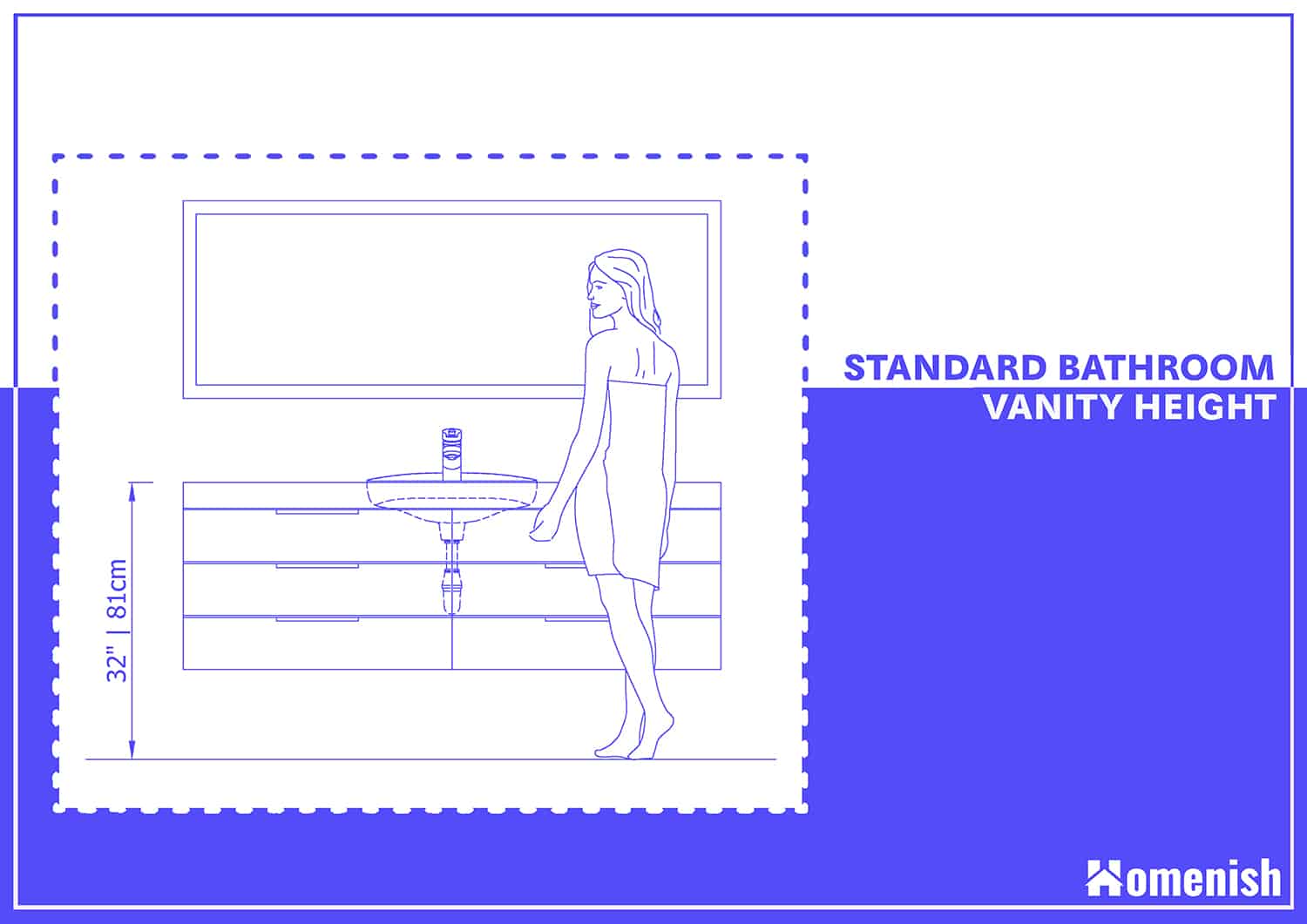Standard Bathroom Vanity Heights
The height of a bathroom vanity is a crucial consideration for both functionality and aesthetics. A well-chosen vanity height ensures comfortable use, optimizes storage space, and complements the overall design of the bathroom.
Standard Vanity Heights and Factors Influencing Them
The standard height for bathroom vanities typically ranges from 30 to 36 inches. However, this range can vary depending on several factors:
- Sink Type: The type of sink used can influence the overall height. For example, vessel sinks often require a taller vanity to accommodate their unique design.
- Countertop Material: The thickness of the countertop material can also affect the final height. Thicker countertops will naturally result in a taller vanity.
- Intended User Height: The height of the intended users is a significant factor. For shorter individuals, a lower vanity might be more comfortable, while taller individuals might prefer a higher vanity.
Vanity Heights, Sink Types, and Applications
The following table provides a comprehensive overview of common vanity heights, corresponding sink types, and typical applications:
| Vanity Height (inches) | Sink Type | Typical Applications |
|---|---|---|
| 30-32 | Undermount Sink | Small bathrooms, guest bathrooms, powder rooms |
| 32-34 | Drop-in Sink | Standard bathrooms, master bathrooms |
| 34-36 | Vessel Sink | Larger bathrooms, modern bathrooms |
| 36-38 | Custom Sink | High-end bathrooms, bathrooms with unique designs |
The standard height of a bathroom vanity is a balance between functionality, aesthetics, and the needs of the intended users.
Factors Affecting Vanity Height Choice

Choosing the right vanity height for your bathroom is essential for both aesthetics and functionality. While standard heights exist, several factors can influence your ideal vanity height. Consider these factors to create a bathroom that’s both stylish and comfortable.
Ceiling Height
The height of your bathroom ceiling can significantly impact your vanity selection. In rooms with low ceilings, a tall vanity can make the space feel cramped and overwhelming. Aim for a vanity height that leaves adequate clearance between the top of the vanity and the ceiling, allowing for sufficient headroom and a sense of spaciousness.
Considerations for Accessible Bathroom Vanities: How High Is A Bathroom Vanity

Creating an accessible bathroom is essential for ensuring comfort and independence for individuals with mobility challenges. Accessible bathroom vanities play a crucial role in achieving this goal.
ADA-Compliant Vanity Heights
The Americans with Disabilities Act (ADA) sets standards for accessible bathroom design, including vanity heights. These standards ensure that people with disabilities can safely and comfortably use bathroom facilities. The ADA-compliant vanity height is 34 inches from the finished floor to the top of the vanity. This height allows for sufficient knee space and a comfortable reach for users in wheelchairs or with limited mobility.
Key Features of Accessible Bathroom Vanities
Accessible bathroom vanities are designed with specific features to enhance usability and safety for individuals with disabilities.
Open Knee Space
A critical feature of accessible vanities is open knee space. This refers to the area beneath the vanity that is free of obstructions, allowing users in wheelchairs to maneuver easily and comfortably. The ADA requires a minimum of 27 inches of clear knee space.
Adjustable Heights
Some accessible vanities offer adjustable heights to accommodate users of varying heights and mobility levels. These vanities typically feature a mechanism that allows the countertop to be raised or lowered to the desired height.
Grab Bars
Grab bars provide additional support and stability, particularly for individuals who need assistance getting in and out of their wheelchairs. They are typically installed on the vanity itself or nearby walls.
Comparing Standard Vanities and Accessible Vanities, How high is a bathroom vanity
Standard bathroom vanities are generally designed for able-bodied individuals and may not meet the accessibility requirements for people with disabilities. Here’s a comparison of key design elements:
| Feature | Standard Vanity | Accessible Vanity |
|---|---|---|
| Height | Typically 30-32 inches | 34 inches (ADA-compliant) |
| Knee Space | May have obstructions or limited space | Minimum of 27 inches of clear knee space |
| Adjustable Height | Not typically adjustable | May have adjustable height options |
| Grab Bars | Not typically included | Often includes grab bars for support |
